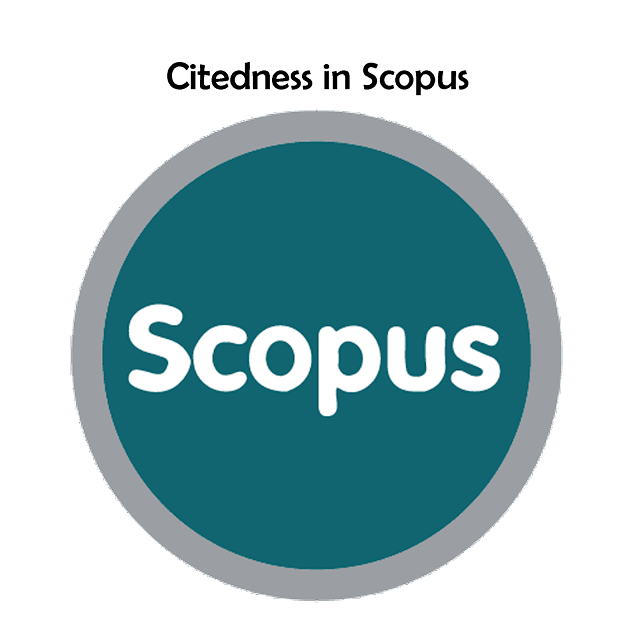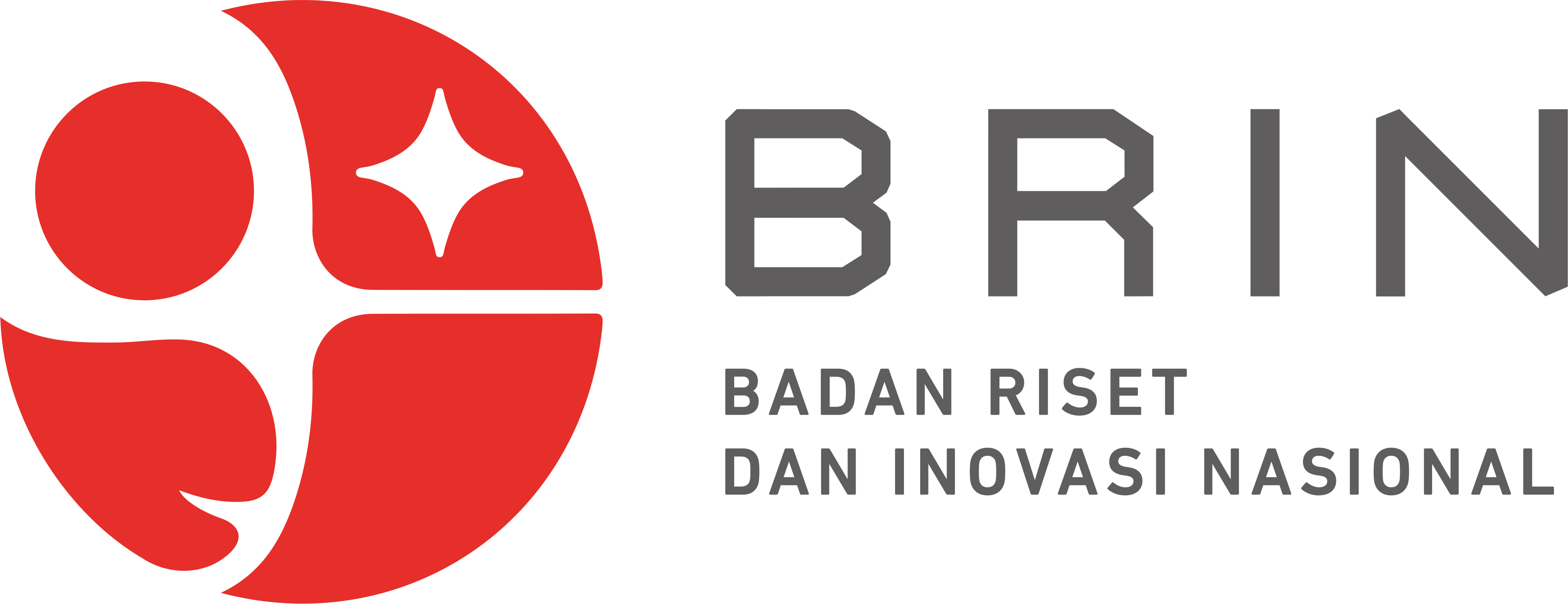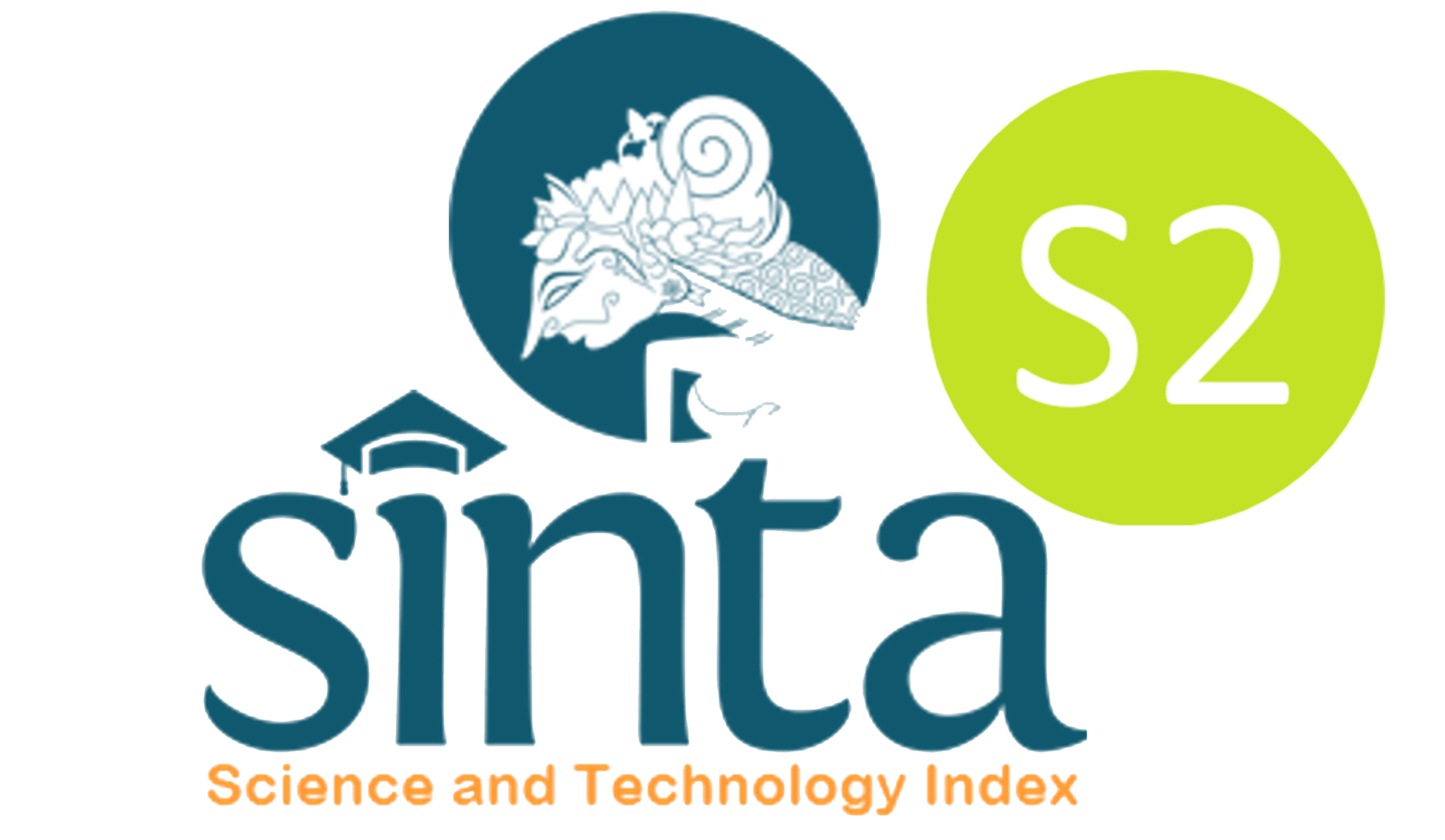Design and Build of IoT Based Flood Prone Monitoring System at Semani’s Pump House Drainage System
'Aisyah 'Aisyah(1); Aji Ery Burhandenny(2*); Happy Nugroho(3); Didit Suprihanto(4);
(1) Mulawarman University
(2) Mulawarman University
(3) Mulawarman University
(4) Mulawarman University
(*) Corresponding Author
AbstractFloods are a common disaster in watersheds, and flood control is difficult. However, losses can be reduced by quickly disseminating alert status information. This paper proposes a prototype of a monitoring system that can determine the status of flood alerts in real time and quickly disseminating to the community, allowing people to be better prepared for flood disasters. The system was developed using the R&D method and consists of hardware and software development. The hardware comprises several sensor modules to read the discharge, temperature, humidity, and water level and to transmit the readings to the software. The software is divided into two applications: a website application and a Telegram application. The public can find the flood alert status history data from the website and obtain flood alert status warning messages and the latest alert status from Telegram. The results of the tests indicated that the sensors were very accurate, with a MAPE value of less than 10%. The software test also showed that the input and output were according to design. The proposed system can potentially reduce flood losses by providing early warning information to the community. The system is also scalable and adaptable to other watersheds. KeywordsFlood; IoT; NodeMCU ESP 32; Telegram; Website
|
Full Text:PDF |
Article MetricsAbstract view: 622 timesPDF view: 194 times |
Digital Object Identifier https://doi.org/10.33096/ilkom.v15i2.1581.303-316 https://doi.org/10.33096/ilkom.v15i2.1581.303-316
|
Cite |
References
U. C. Nkwunonwo, M. Whitworth, and B. Baily, “A review of the current status of flood modelling for urban flood risk management in the developing countries,” Sci. African, vol. 7, pp. 1–16, 2020, doi: 10.1016/j.sciaf.2020.e00269.
N. Faridah, M. Nordin, and H. Mohamad, “Levee as a Flood Mitigation Option in Malaysia , Its’ Susceptibility to Failure and Design Approach,” Int. J. Integr. Eng., vol. 11, no. 9, pp. 224–233, 2019, doi: 10.30880/ijie.2019.11.09.024.
P. S. Patil and S. S. Jain, “Survey on Flood Monitoring & Alerting Systems,” Int. J. Sci. Res. Eng. Manag., vol. 04, no. 01, pp. 1–3, 2020.
M. I. Zakaria and W. A. Jabbar, “Flood Monitoring And Warning Systems : A Brief Review,” J. SOUTHWEST JIAOTONG Univ., vol. 56, no. 3, pp. 140–156, 2021.
A. Munir et al., “Flood Susceptibility Assessment Using Frequency Ratio Modelling Approach in Northern Sindh and Southern Punjab, Pakistan,” Polish J. Environ. Stud., vol. 31, no. 4, pp. 3249–3261, 2022, doi: 10.15244/pjoes/145607.
N. S. Romali et al., “Flood Damage Function Model for Residential area in Kuantan : A Preliminary Study,” Int. J. Integr. Eng., vol. 11, no. 2, pp. 203–213, 2019, doi: 10.30880/ijie.2019.11.02.022.
Y. Wu, J. Sun, Y. Jun Xu, G. Zhang, and T. Liu, “Projection of future hydrometeorological extremes and wetland flood mitigation services with different global warming levels: A case study in the Nenjiang river basin,” Ecol. Indic., vol. 140, no. April, p. 108987, 2022, doi: 10.1016/j.ecolind.2022.108987.
J. Pinos and A. Quesada-rom, “Flood Risk-Related Research Trends in Latin America and the Caribbean,” MDPI, vol. 14, no. 1, pp. 1–14, 2022.
B. Jongman, “Effective adaptation to rising flood risk,” Nat. Commun., vol. 9, no. 1986, pp. 1–3, 2018, doi: 10.1038/s41467-018-04396-1.
Z. W. Kundzewicz, B. Su, Y. Wang, G. Wang, G. Wang, and J. Huang, “Flood risk in a range of spatial perspectives – from global to local scales,” Nat. Hazards Earth Syst. Sci., vol. 19, no. 7, pp. 1319–1328, 2019, doi: 10.5194/nhess-19-1319-2019.
G. Di Baldassarre et al., “Hess Opinions : An interdisciplinary research agenda to explore the unintended consequences of structural flood protection,” pp. 5629–5637, 2018.
J. Liu, C. Hyo-Seob, S. Osman, J. Hyeon-Gyo, and K. Lee, “Review of the Status of Urban Flood Monitoring and Forecasting in Tc Region,” Trop. Cyclone Res. Rev., vol. 11, no. 2, pp. 103–119, 2022, doi: 10.1016/j.tcrr.2022.07.001.
X. Yuan, X. chun Zhang, X. gui Wang, and Y. Zhang, “Flood disaster monitoring based on Sentinel-1 data: A case study of Sihu Basin and Huaibei Plain, China,” Water Sci. Eng., vol. 14, no. 2, pp. 87–96, 2021, doi: 10.1016/j.wse.2021.06.001.
N. Gyawali, D. Devkota, P. Chaudhary, A. Chhetri, and N. Raj, “Rural Strategies For Flood Resilience: Analysis Of Community Actions In Narayani River Basin, Nepal,” Int. J. Agric. Ext. Rural Dev. Stud., vol. 8, no. 5, pp. 1–16, 2021, doi: 10.37745/ijaerds.15.
A. A. Ghapar, S. Yussof, and A. A. Bakar, “Internet of Things (IoT) Architecture for Flood Data Management,” Int. J. Futur. Gener. Commun. Netw., vol. 11, no. 1, pp. 55–62, 2018, doi: 10.14257/ijfgcn.2018.11.1.06.
G. Ufuoma, B. F. Sasanya, P. Abaje, and P. Awodutire, “Efficiency of camera sensors for flood monitoring and warnings,” Sci. African, vol. 13, 2021, doi: 10.1016/j.sciaf.2021.e00887.
E. Michel-kerjan, J. Ikhzan, M. Fakhrudin, and L. Subehi, “Flood Hazard Assessment with High Spatial Resolution Under Climate Change Scenario,” J. Phys. Conf. Ser. (ICETIA 2020), vol. 2339, 2021, doi: 10.1088/1742-6596/1858/1/012058.
A. Raimulan, M. Nanang, and S. Murlianti, “Stopping the Habit of Killing Rivers , the Struggle of the Karang Mumus River Lovers Community to Build River Friendly Cultural Practices in Samarinda , East Kalimantan Province , Indonesia,” 2022.
A. Diansyukma, S. P. Saraswati, and A. T. Yuliansyah, “Analysis of the Carrying Capacity and the Total Maximum Daily Loads of the Karang Mumus Sub-watershed in Samarinda City Using the WASP Method,” J. Civ. Eng. Forum, vol. 7, no. 2, pp. 209–222, 2021, doi: 10.22146/jcef.62826.
S. N. Rahmat and A. Khastagir, “An Analysis of Abrupt Change in Rainfall and the Occurrence of Extreme Events,” Int. J. Integr. Eng., vol. 11, no. 9, pp. 240–246, 2019.
S. S. Akay, O. Özcan, and F. Balık Şanlı, “Quantification and visualization of flood-induced morphological changes in meander structures by UAV-based monitoring,” Eng. Sci. Technol. an Int. J., vol. 27, 2022, doi: 10.1016/j.jestch.2021.05.020.
M. S. Rahman and L. Di, “A Systematic Review on Case Studies of Remote-Sensing-Based Flood Crop Loss Assessment,” MDPI, vol. 10, no. 4, pp. 1–30, 2020.
M. Acosta-coll, F. Ballester-merelo, M. Martinez-peir, and E. D. la Hoz-Franco, “Real-Time Early Warning System Design for Pluvial Flash Floods — A Review,” MDPI, vol. 18, no. 7, pp. 1–26, 2018, doi: 10.3390/s18072255.
A. M. Tawfik, “River flood routing using artificial neural networks,” Ain Shams Eng. J., vol. xxx, no. xxxx, p. 101904, 2022, doi: 10.1016/j.asej.2022.101904.
S. Villamil, C. Hernández, and G. Tarazona, “An overview of internet of things,” Telkomnika (Telecommunication Comput. Electron. Control., vol. 18, no. 5, pp. 2320–2327, 2020, doi: 10.12928/TELKOMNIKA.v18i5.15911.
A. Yacob, “A Review of Internet of Things (IoT): Implementations and Challenges,” Int. J. Adv. Trends Comput. Sci. Eng., vol. 9, no. 1.3, pp. 373–376, 2020, doi: 10.30534/ijatcse/2020/5891.32020.
S. Kumar, P. Tiwari, and M. Zymbler, “Internet of Things is a revolutionary approach for future technology enhancement: a review,” J. Big Data, vol. 6, no. 1, 2019, doi: 10.1186/s40537-019-0268-2.
A. Abdul-Qawy, A. Shaddad Abdul-Qawy, P. P. J, E. Magesh, and T. Srinivasulu, “The Internet of Things (IoT): An Overview,” Int. J. Eng. Res. Appl., vol. 5, no. 12, pp. 71–82, 2015, [Online]. Available: www.ijera.com
H. Zhang et al., “Smart object recommendation based on topic learning and joint features in the social internet of things,” Digit. Commun. Networks, 2022, doi: 10.1016/j.dcan.2022.04.025.
H. Pourrahmani et al., “The applications of Internet of Things in the automotive industry: A review of the batteries, fuel cells, and engines,” Internet of Things (Netherlands), vol. 19, no. July, p. 100579, 2022, doi: 10.1016/j.iot.2022.100579.
E. Oriwoh, P. Sant, and G. Epiphaniou, “Guidelines for Internet of things deployment approaches - The thing commandments,” Procedia Comput. Sci., vol. 21, pp. 122–131, 2013, doi: 10.1016/j.procs.2013.09.018.
Y. E. Ergemen, “Edge-to-Cloud Sensing and Actuation Semantics in the Industrial Internet of Things,” Pervasive Mob. Comput., p. 110456, 2022, doi: 10.1016/j.pmcj.2022.101699.
N. Chamara, M. D. Islam, G. (Frank) Bai, Y. Shi, and Y. Ge, “Ag-IoT for crop and environment monitoring: Past, present, and future,” Agric. Syst., vol. 203, no. April, p. 103497, 2022, doi: 10.1016/j.agsy.2022.103497.
Y. Mona, T. A. Do, C. Sekine, P. Suttakul, and C. Chaichana, “Geothermal electricity generator using thermoelectric module for IoT monitoring,” Energy Reports, vol. 8, pp. 347–352, 2022, doi: 10.1016/j.egyr.2022.02.114.
L. J, L. S. V. S, M. R, and M. R, “Automated food grain monitoring system for warehouse using IOT,” Meas. Sensors, vol. 24, no. July, p. 100472, 2022, doi: 10.1016/j.measen.2022.100472.
W. A. Jabbar, T. Subramaniam, A. E. Ong, M. I. Shu’Ib, W. Wu, and M. A. de Oliveira, “LoRaWAN-Based IoT System Implementation for Long-Range Outdoor Air Quality Monitoring,” Internet of Things (Netherlands), vol. 19, no. April, p. 100540, 2022, doi: 10.1016/j.iot.2022.100540.
C. H. Park, B. O. Shim, and J. W. Park, “Open-source IoT monitoring system of a shallow geothermal system for heating and cooling year-round in Korea,” Energy, vol. 250, p. 123782, 2022, doi: 10.1016/j.energy.2022.123782.
H. Andrianto, Suhardi, A. Faizal, N. Budi Kurniawan, and D. Praja Purwa Aji, “Performance evaluation of IoT-based service system for monitoring nutritional deficiencies in plants,” Inf. Process. Agric., no. xxxx, pp. 1–19, 2021, doi: 10.1016/j.inpa.2021.10.001.
E. Kaku, R. K. Lomotey, and R. Deters, “Using Provenance and CoAP to track Requests/Responses in IoT,” Procedia Comput. Sci., vol. 94, no. MobiSPC, pp. 144–151, 2016, doi: 10.1016/j.procs.2016.08.023.
A. Suvarnamma and J. A. Pradeepkiran, “SmartBin system with waste tracking and sorting mechanism using IoT,” Clean. Eng. Technol., vol. 5, p. 100348, 2021, doi: 10.1016/j.clet.2021.100348.
Z. Meng, L. Meng, and H. Tomiyama, “Camera motion estimation algorithm for IoT devices based on optimized feature tracking method,” Procedia Comput. Sci., vol. 174, no. 2019, pp. 22–26, 2020, doi: 10.1016/j.procs.2020.06.051.
R. Mohammedqasem, H. Mohammedqasim, and O. Ata, “Real-time data of COVID-19 detection with IoT sensor tracking using artificial neural network,” Comput. Electr. Eng., vol. 100, no. April, p. 107971, 2022, doi: 10.1016/j.compeleceng.2022.107971.
B. M. Al-Madani and E. Q. Shahra, “An Energy Aware Plateform for IoT Indoor Tracking Based on RTPS,” Procedia Comput. Sci., vol. 130, pp. 188–195, 2018, doi: 10.1016/j.procs.2018.04.029.
A. A. Ghapar, S. Yussof, and A. A. Bakar, “Internet of Things (IoT) Architecture for Flood Data Management,” Int. J. Futur. Gener. Commun. Netw., vol. 11, no. 1, pp. 55–62, 2018, doi: 10.14257/ijfgcn.2018.11.1.06.
G. Ortiz et al., “A microservice architecture for real-time IoT data processing: A reusable Web of things approach for smart ports,” Comput. Stand. Interfaces, vol. 81, no. March 2021, p. 103604, 2022, doi: 10.1016/j.csi.2021.103604.
D. Abdelqawy, A. El-Korany, A. Kamel, and S. Makady, “Hub-OS: An interoperable IoT computing platform for resources utilization with real-time support,” J. King Saud Univ. - Comput. Inf. Sci., vol. 34, no. 4, pp. 1498–1510, 2022, doi: 10.1016/j.jksuci.2022.02.011.
J. S. Botero-Valencia, J. Valencia-Aguirre, D. Gonzalez-Montoya, and C. A. Ramos-Paja, “A low-cost system for real-time measuring of the sunlight incident angle using IoT,” HardwareX, vol. 11, p. e00272, 2022, doi: 10.1016/j.ohx.2022.e00272.
W. Wu, C. Cheung, S. Y. Lo, R. Y. Zhong, and G. Q. Huang, “An iot-enabled real-time logistics system for a third party company: A case study,” Procedia Manuf., vol. 49, pp. 16–23, 2020, doi: 10.1016/j.promfg.2020.06.005.
K. Matsui, Y. Yamagata, and S. Kawakubo, “Real-time sensing in residential area using IoT technology for finding usage patterns to suggest action plan to conserve energy,” Energy Procedia, vol. 158, pp. 6438–6445, 2019, doi: 10.1016/j.egypro.2019.01.171.
Periyadi, G. I. Hapsari, Z. Wakid, and S. Mudopar, “IoT-based guppy fish farming monitoring and controlling system,” Telkomnika (Telecommunication Comput. Electron. Control., vol. 18, no. 3, pp. 1538–1545, 2020, doi: 10.12928/TELKOMNIKA.v18i3.14850.
J. Janet, S. Balakrishnan, and S. S. Rani, “IOT Based Fishery Management System,” Int. J. Ocean. Oceanogr., vol. 13, no. 1, pp. 147–152, 2019, [Online]. Available: http://www.ripublication.com
D. Ratnasari, Rodhiyah, and A. Pramudwiatmoko, “IoT Prototype Development of Automatic Fish Feeder and Water Replacement,” Int. J. Eng. Technol. Nat. Sci., vol. 2, no. 2, pp. 51–55, 2021, doi: 10.46923/ijets.v2i2.71.
C. N. Udanor et al., “An internet of things labelled dataset for aquaponics fish pond water quality monitoring system,” Data Br., vol. 43, p. 108400, 2022, doi: 10.1016/j.dib.2022.108400.
A. I. Arafat, T. Akter, M. F. Ahammed, M. Y. Ali, and A. Al Nahid, “A dataset for internet of things based fish farm monitoring and notification system,” Data Br., vol. 33, p. 106457, 2020, doi: 10.1016/j.dib.2020.106457.
A. Muneer, S. M. Fati, and S. Fuddah, “Smart health monitoring system using IoT based smart fitness mirror,” Telkomnika (Telecommunication Comput. Electron. Control., vol. 18, no. 1, pp. 317–331, 2020, doi: 10.12928/TELKOMNIKA.v18i1.12434.
M. N. O. Sadiku, S. Alam, and S. M. Musa, “IoT for Healthcare,” Int. J. Electron. Commun. Eng., vol. 5, no. 11, pp. 5–7, 2018, doi: 10.14445/23488549/IJECE-V5I11P102.
S. Abbas, “An innovative IoT service for medical diagnosis,” Int. J. Electr. Comput. Eng., vol. 10, no. 5, pp. 4918–4927, 2020, doi: 10.11591/ijece.v10i5.pp4918-4927.
R. O. Ojo, A. O. Ajayi, H. A. Owolabi, L. O. Oyedele, and L. A. Akanbi, “Internet of Things and Machine Learning techniques in poultry health and welfare management: A systematic literature review,” Comput. Electron. Agric., vol. 200, no. February, p. 107266, 2022, doi: 10.1016/j.compag.2022.107266.
O. Debauche, M. El Moulat, S. Mahmoudi, S. Boukraa, P. Manneback, and F. Lebeau, “Web Monitoring of Bee Health for Researchers and Beekeepers Based on the Internet of Things,” Procedia Comput. Sci., vol. 130, pp. 991–998, 2018, doi: 10.1016/j.procs.2018.04.103.
Y. O’Connor, W. Rowan, L. Lynch, and C. Heavin, “Privacy by Design: Informed Consent and Internet of Things for Smart Health,” Procedia Comput. Sci., vol. 113, pp. 653–658, 2017, doi: 10.1016/j.procs.2017.08.329.
A. Santos, J. Macedo, A. Costa, and M. J. Nicolau, “Internet of Things and Smart Objects for M-health Monitoring and Control,” Procedia Technol., vol. 16, pp. 1351–1360, 2014, doi: 10.1016/j.protcy.2014.10.152.
M. Alowaidi, “Fuzzy efficient energy algorithm in smart home environment using Internet of Things for renewable energy resources,” Energy Reports, vol. 8, pp. 2462–2471, 2022, doi: 10.1016/j.egyr.2022.01.177.
B. Li and J. Yu, “Research and application on the smart home based on component technologies and Internet of Things,” Procedia Eng., vol. 15, pp. 2087–2092, 2011, doi: 10.1016/j.proeng.2011.08.390.
R. Islam, M. W. Rahman, R. Rubaiat, M. M. Hasan, M. M. Reza, and M. M. Rahman, “LoRa and server-based home automation using the internet of things (IoT),” J. King Saud Univ. - Comput. Inf. Sci., vol. 34, no. 6, pp. 3703–3712, 2022, doi: 10.1016/j.jksuci.2020.12.020.
R. A. Abdelouahid, O. Debauche, and A. Marzak, “Internet of Things: A new Interoperable IoT Platform. Application to a Smart Building,” Procedia Comput. Sci., vol. 191, no. 2019, pp. 511–517, 2021, doi: 10.1016/j.procs.2021.07.066.
M. A. Baballe and Z. Abbati, “A Review of Flood Detection Systems,” in 1st International Conference on Engineering and Applied Natural Sciences (ICEANS), 2022, pp. 1234–1239.
C. K. Gomathy, P. G G Lasya, and H. Kumar, “A Study on Iot Based Flood Detection Management System,” Int. J. Eng. Adv. Technol., vol. 10, no. 4, pp. 130–133, 2021, doi: 10.35940/ijeat.d2407.0410421.
S. Ramadhani, N. A. Putri, I. Sulistianingsih, and E. Hariyanto, “SMS Gateway-Based Early Flood Detection Warning System Design,” Int. J. Econ. Technol. Soc. Sci., vol. 2, no. 1, pp. 62–69, 2021, doi: 10.53695/injects.v2i1.223.
A. Bhujbal, P. Hole, P. Khedkar, and N. Zaman, “Flood Detection And Management System,” Int. J. Innov. Res. Sci. Eng., vol. 08, no. 04, pp. 104–110, 2022.
W. M. Shah, F. Arif, A. A. Shahrin, and A. Hassan, “The implementation of an IoT-based Flood Alert System,” Int. J. Adv. Comput. Sci. Appl., vol. 9, no. 11, pp. 620–623, 2018, doi: 10.14569/ijacsa.2018.091187.
W. H. Wan Hassan, A. Z. Jidin, S. A. C. Aziz, and N. Rahim, “Flood Disaster Indicator Of Water Level Monitoring System,” Int. J. Electr. Comput. Eng., vol. 9, no. 3, pp. 1694–1699, 2019, doi: 10.11591/ijece.v9i3.pp1694-1699.
Robynson Anak Dondang, Zuhanis Mansor, and Gandeva Bayu Satrya, “Design and Development of Flood Monitoring and Early Warning System,” Malaysian J. Sci. Adv. Technol., vol. 1, no. 3, pp. 72–76, 2021, doi: 10.56532/mjsat.v1i3.15.
N. A. Athirah, N. H. Radzi, M. N. Abdullah, S. A. Jumaat, and N. Z. Mohamad, “Solar-powered flood early warning system with short message service (SMS) notifications,” Indones. J. Electr. Eng. Comput. Sci., vol. 18, no. 3, pp. 1156–1162, 2020, doi: 10.11591/ijeecs.v18.i3.pp1156-1162.
G. Sekar, S. Nithyashree, and D. Pavithra, “IoT Based Early Flood Detection and Avoidance System,” Int. J. Innov. Res. Sci. Eng. Technol., vol. 9, no. 8, pp. 7817–7821, 2020.
M. S. Sayyad, P. Surve, N. Shaikh, M. Gharat, and P. Tambe, “IOT Based Early Flood Detection and Avoidance,” ICONIC Res. Eng. JOURNALS, vol. 3, no. 12, pp. 50–55, 2020.
A. Prafanto and E. Budiman, “A Water Level Detection: IoT Platform Based on Wireless Sensor Network,” in Proceedings - 2nd East Indonesia Conference on Computer and Information Technology: Internet of Things for Industry, EIConCIT 2018, 2018, pp. 46–49. doi: 10.1109/EIConCIT.2018.8878559.
A. Agung, N. Gunawan, and M. Sumadiyasa, “Water Level Detection System Based on Ultrasonic Sensors HC-SR04 and ESP8266-12 Modules with Telegram and Buzzer Communication Media,” Int. Inf. Eng. Technol. Assoc., vol. 18, no. 3, pp. 305–309, 2019, doi: 10.18280/i2m.180311.
Dinesh D. dan Regina I.Aneette, “Prediction and Effective Monitoring of Flood Using Arduino System Controller and ESP8266 Wi-Fi Module,” Int. J. Commun. Netw. Syst., vol. 8, no. 50, pp. 50–55, 2019.
A. N, D. Meghana, A. K, N. H. P, R. R. Patil, and P. P, “Autonomous Flood Alerting System,” Int. J. Eng. Res. Technol., vol. 8, no. 13–34, 2020.
R. Amutha, N. D, N. K. Azad, P. B, and S. S, “A Decentralised Disaster Detection Approach using Image Data,” Int. J. Technol. Inf. Comput., vol. 1, no. 1, pp. 37–49, 2020, doi: 10.5281/zenodo.3930867.
K. Das, S. Ghosh, and H. Sekhar Dutta, “A Machine Learning and IoT based approach for Flood Monitoring and Prevention,” Int. J. Eng. Res. Appl., vol. 12, no. 5, pp. 11–19, 2022, doi: 10.9790/9622-1205021119.
T. Andriani, M. R. Azzam, P. A. Topan, M. Hidayatullah, and S. Esabella, “Design of Flood Early Detection System using WeMos D1 Mini ESP8266 IoT Technology,” J. Phys. Sci. Eng., vol. 4, no. 2, pp. 67–73, 2019, doi: 10.17977/um024v4i22019p067.
D. D. Hartanto and P. W. Purnawan, “Designing an early flood detection system prototype in riverbank settlements,” Matrix J. Manaj. Teknol. dan Inform., vol. 11, no. 3, pp. 185–197, 2021, doi: 10.31940/matrix.v11i3.185-197.
J. K. Park and E. Y. Park, “Real-Time Monitoring Home Security System Utilizing Iot and Telegram Bot,” Math. Stat. Eng. Appl., vol. 71, no. 3, pp. 507–514, 2022.
N. Umar and A. Gray, “Flooding in Nigeria : a review of its occurrence and impacts and approaches to modelling flood data,” Int. J. Environ. Stud., vol. 1, no. 22, pp. 1–22, 2022, doi: 10.1080/00207233.2022.2081471.
Al-Khowarizmi, R. Syah, M. K. M. Nasution, and M. Elveny, “Sensitivity of MAPE using detection rate for big data forecasting crude palm oil on k-nearest neighbor,” Int. J. Electr. Comput. Eng., vol. 11, no. 3, pp. 2696–2703, 2021, doi: 10.11591/ijece.v11i3.pp2696-2703.
Refbacks
- There are currently no refbacks.
Copyright (c) 2023 'Aisyah 'Aisyah, Aji Ery Burhandenny, Happy Nugroho, Didit Suprihanto

This work is licensed under a Creative Commons Attribution-ShareAlike 4.0 International License.










